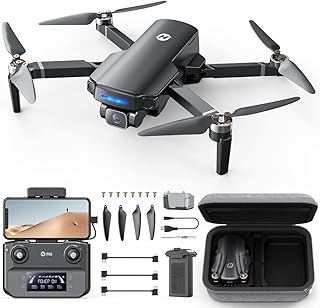Drones in Agriculture: Boosting Efficiency and Productivity
Drones are revolutionizing the agricultural industry, offering a multitude of benefits that enhance efficiency and productivity. From precision spraying and crop monitoring to data analysis and livestock management, drones are proving to be invaluable tools for modern farmers.
Here's how drones are boosting efficiency and productivity in agriculture:
1. Precision Spraying:
* Reduced chemical use: Drones can apply pesticides and fertilizers with pinpoint accuracy, minimizing waste and reducing environmental impact.
* Improved targeting: Drones can spray targeted areas, ensuring chemicals reach their intended destination and avoid unnecessary exposure to other plants.
* Increased efficiency: Drones can cover vast areas quickly, saving time and labor compared to traditional methods.
2. Crop Monitoring and Scouting:
* Early disease and pest detection: Drones equipped with high-resolution cameras and sensors can detect signs of disease or pest infestations early on, allowing for swift intervention.
* Improved yield estimates: Drones can capture detailed aerial images of crops, providing valuable data for yield prediction and resource allocation.
* Enhanced plant health monitoring: Drones can analyze plant health indicators like chlorophyll levels, water stress, and nutrient deficiencies, enabling farmers to optimize crop management.
3. Data Analysis and Insights:
* Real-time data collection: Drones can collect a wide range of data, including crop health, soil conditions, and weather patterns.
* Advanced analytics: Data gathered from drones can be analyzed using sophisticated algorithms to identify trends, patterns, and potential issues.
* Informed decision-making: Farmers can utilize data insights to make informed decisions regarding irrigation, fertilization, pest control, and other aspects of crop management.
4. Livestock Management:
* Livestock monitoring: Drones can be used to monitor livestock health and behavior, identifying sick or injured animals.
* Counting and tracking: Drones with thermal imaging can accurately count and track livestock, optimizing herd management.
* Fencing inspections: Drones can efficiently inspect fences for damage or breaches, ensuring animal safety.
5. Other Applications:
* Seed planting: Drones can be used for precise seed planting, minimizing seed waste and maximizing crop yields.
* Irrigation management: Drones can identify areas with insufficient or excessive water, allowing for optimized irrigation strategies.
* Land mapping and surveying: Drones can quickly create detailed maps of farmlands, aiding in planning and resource management.
Challenges and Considerations:
* Regulations and safety: The use of drones in agriculture is subject to regulations regarding airspace, privacy, and safety.
* Cost and infrastructure: Drones and associated technologies can be expensive, and farmers may require specialized knowledge and infrastructure to operate them effectively.
* Battery life and range: Battery life and operating range of drones can limit their effectiveness for larger farms or challenging terrain.
Conclusion:
Drones are a game-changer for the agricultural industry, offering a wide range of benefits that enhance efficiency, productivity, and sustainability. As technology continues to advance, drones are expected to play an even greater role in shaping the future of agriculture. By embracing these innovative tools, farmers can achieve greater yields, reduce costs, and ensure a more sustainable future for food production.


